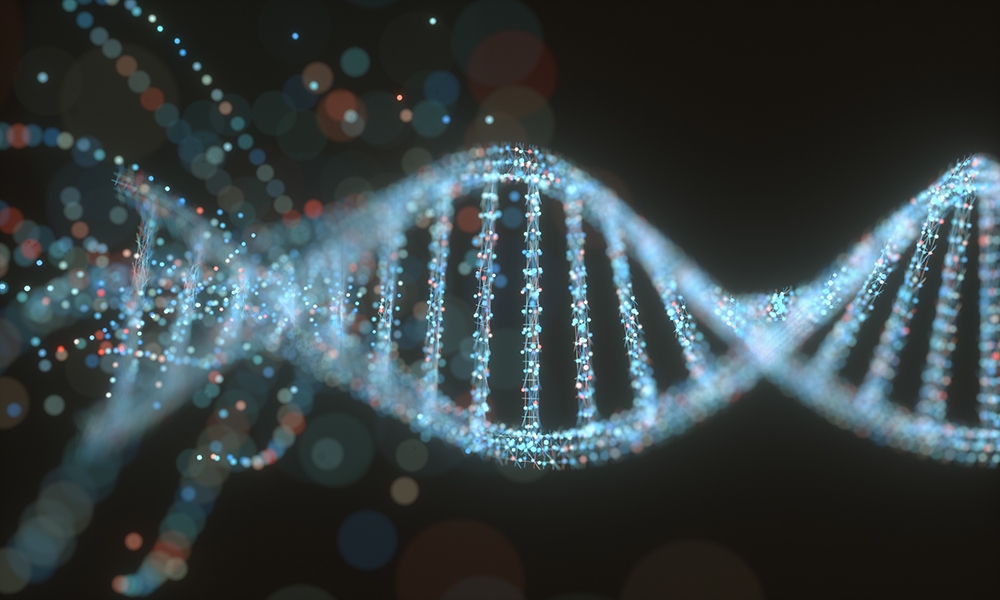I hesitated to write this article. What business does a psychologist like me have writing about genetics and the gender gap in autism? I am not a geneticist. At most, genetics plays a small role in my professional life. But questions kept nagging at me. Some are specific to autism spectrum disorder (ASD), my area of research and clinical practice. Some are also relevant to other areas of psychology.

My first question is one that anyone who works in the autism field asks themselves.
Why Are There So Many More Autistic Males Than Females?
One part of the answer is straightforward: Some instances of autism are inherently more common among males because males have only one X chromosome (Bartholomay et al., 2019). For example, males are more susceptible to severe symptoms of fragile X syndrome, which is caused by changes in a gene on the x chromosome. Fragile X often co-occurs with autism. Females have two X chromosomes, which means one chromosome can sometimes compensate for the other, making them less susceptible to fragile X and, in turn, autism. There are other similar examples, such as Klinefelter syndrome. Because of this, there might always be a gender gap in autism.
For 2008, the U.S. Centers for Disease Control and Prevention reported a ratio of 1 to 4.7 (Baio, 2012). But the most recent data from the agency show a female-to-male ratio of 1 to 3.8 for autism diagnoses among 8-year-old children (Maenner et al., 2023). That is a huge change in a short amount of time.
Why Is the Gender Gap in Autism Shifting So Rapidly?
I know an autistic woman who is a successful adult with a job and an independent life. She is bright with no intellectual disability. When she was in school, she was an average student. She used her intelligence to manage social situations, but it was hard for her. Mostly, she was quiet. By the time she got home, masking her autism had exhausted her. Like many autistic girls, she didn’t express the same rigid or repetitive behaviors that autistic boys typically express. Her rigid behaviors were more subtle, and she could easily conceal them.
She was diagnosed with autism when she was an adult, and the diagnosis came as a relief. Finally, she understood why it was hard for her to make eye contact and why it was challenging to make friends.
Several women fit that description because it’s a common story. This isn’t simply my anecdotal experience. The authors of one study suggest that girls without co-occurring intellectual impairment may be less likely to be diagnosed with autism, in part because they are less likely to exhibit stereotypical repetitive autism behaviors — the kinds that are more common in boys (Kreiser et al., 2014).
Quietness among girls is more socially acceptable. A girl who is quiet in school and doesn’t have an intellectual disability or a language delay is probably less likely to be tested for autism. Their symptoms often go unnoticed if they don’t have behavior issues and aren’t causing disruption.
Of course, girls with severe ASD symptoms or an intellectual disability will likely get tested, but other autistic girls may fall through the cracks.
As we become more aware of undiagnosed girls, this issue is receding, and the gap between males and females is narrowing.
Yet even as the gender gap in autism narrows, its continued existence likely helps to perpetuate it. Parents, teachers, school counselors, and clinicians are all primed to look for autism in boys. Naturally, they look for the symptoms that are common in boys.
One paper cites evidence that bias in the Autism Diagnosis Interview-Revised (ADI-R), a common diagnostic tool for autism, may also contribute to the gap in diagnoses between males and females (Beggiato et al., 2017). The authors write, “Converging studies show less repetitive and stereotyped behaviors in girls, raising concerns about the risk of underestimating ASD in females when using the diagnostic algorithm of the ADI-R.” In this instance, the people who are primed to look for symptoms common in boys are the ones who designed a diagnostic tool for ASD. Beggiato et al. write that the DSM-5 criteria for ASD “probably reinforce this bias….”
Girls and women are also underrepresented in autism studies. In a 2014 review of autism research literature, Watkins suggested that males are overrepresented in some studies and noted that few studies involve only female participants (Watkins, 2014).
Taken together, the narrowing of the gender gap in autism and the apparent biases toward studying and diagnosing boys suggest that our understanding of the actual composition of the autistic population is not as straightforward as we would like.
Let’s return to my first question.
Why Are There So Many More Autistic Males Than Females?
One 2020 study used genetic analysis to address this question (Zhang et al., 2020). The researchers looked at 174 different genes and compared how they are expressed in males with ASD, females with ASD, and unaffected control participants.
Among the autistic subjects, females were likelier than males to express the genes the researchers studied. The authors cited this as evidence for a “female protective effect” such that “a higher threshold of genetic liability is required for [autistic] females as compared with [autistic] males.”
I am not here to argue with their conclusions or to criticize their methods, as I am not a geneticist. Instead, I would like to explore a question the authors raised further.
They wrote that “a higher genetic load was required in females to reach the threshold for a diagnosis” of ASD.
The italics above are mine. Zhang et al. chose their words with appropriate care. To clarify, I read them as an acknowledgment that having autism and being diagnosed with it are not always the same thing and that their research can be linked only to diagnosis. Elsewhere in the article, they addressed issues similar to the ones I’ve raised above, pointing to research that suggests bias in the way we diagnose autism and specifically in the way that we diagnose females. These issues “might influence the sample and some conclusions,” the authors wrote. That brings me to my last question.
As Researchers Make Connections Between Autism and Genes, How Do We Account for the Shortcomings of the Diagnoses Their Research Rests On?
Put another way: How do we acknowledge that the people who receive an autism diagnosis may represent a specific subset of the autistic population? In the parlance of the Zhang et al. genetics study, to what extent is the “higher genetic load” of autistic females typical of females with ASD or typical of females who get diagnosed?
The underlying question isn’t specific to the genetics of autism. But, it is likely relevant anytime we seek to associate genes with psychological conditions that are complex to diagnose.
There is no simple answer except to call for caution when connecting genes and complex psychologies. Those of us who know how frequently conditions like autism are misdiagnosed — or missed altogether — need to be vocal about our concerns.
No matter how carefully genetics researchers avoid overstating their case, “genetics” carries an aura of certainty. It is natural for journalists and the public to want to reduce complexity and uncertainty, but a consequence can be unmerited conclusions.
I do want to end on a hopeful note. Earlier this year, I attended an autism conference in Stockholm (INSAR 2023) to present some findings. Looking around the conference halls, one change that could help to reduce bias in autism research was evident. Although males are more common than females in the autistic population, my observations at that conference suggested that the same cannot be said of the population of autism researchers.
Doreen Samelson, EdD, MSCP, is the Chief Clinical Officer of Catalight, a nonprofit that provides access to innovative, individualized care services, clinical research, and advocacy — so people with developmental disabilities can choose their path. Samelson leads the organization’s behavioral health research team, focusing on promoting families’ overall well-being.
References
Baio, J. (2012). Prevalence of autism spectrum disorders—Autism and Developmental Disabilities Monitoring Network, 14 sites, United States, 2008. MMWR Surveillance Summaries, 61(SS03), 1–19. https://www.cdc.gov/mmwr/preview/mmwrhtml/ss6103a1.htm
Bartholomay, K. L., Lee, C. H., Bruno, J. L., Lightbody, A. A., & Reiss, A. L. (2019). Closing the gender gap in fragile X syndrome: review on females with FXS and preliminary research findings. Brain sciences, 9(1), 11. https://doi.org/10.3390/brainsci9010011
Beggiato, A., Peyre, H., Maruani, A., Scheid, I., Rastam, M., Amsellem, F., Gillberg, C. I., Leboyer, M., Bourgeron, T., Gillberg, C., & Delorme, R. (2017). Gender differences in autism spectrum disorders: Divergence among specific core symptoms. Autism Research, 10(4), 680–689. https://doi.org/10.1002/aur.1715
Kreiser, N. L., & White, S. W. (2014). ASD in females: Are we overstating the gender difference in diagnosis? Clinical Child and Family Psychology Review, 17, 67–84. https://doi.org/10.1007/s10567-013-0148-9
Maenner, M. J., Warren, Z., Williams, A. R., Amoakohene, E., Bakian, A. V., Bilder, D. A., Durkin, M. S., Fitzgerald, R. T., Furnier, S. M., Hughes, M. M., Ladd-Acosta, C. M., McArthur, D. Pas, E. T., Salinas, A., Vehorn, A., Williams, S., Esler, A., Grzybowski, A., Hall-Lande, J., … Shaw, K. A. (2023). Prevalence and characteristics of autism spectrum disorder among children aged 8 years—Autism and Developmental Disabilities Monitoring Network, 11 sites, United States, 2020. MMWR Surveillance Summaries, 72(SS-2), 1–14. https://doi.org/10.15585/mmwr.ss7202a1
Watkins, E. (2014). The gender of participants in published research involving people with autism spectrum disorders [Master’s thesis 482, Western Michigan University]. ScholarWorks@WMU. https://scholarworks.wmich.edu/masters_theses/482
Zhang, Y., Li, N., Li, C., Zhang, Z., Teng, H., Wang, Y. Zhao, T., Shi, L., Zhang, K., Xia, K., Li, J., & Sun, Z. (2020). Genetic evidence of gender difference in autism spectrum disorder supports the female-protective effect. Translational Psychiatry, 10, Article 4. https://doi.org/10.1038/s41398-020-0699-8








[…] often presents differently in females compared to males. While boys might display more obvious or stereotypical repetitive behaviors and intense interests in…For example, while boys with autism might exhibit a narrow interest in topics like trains or […]